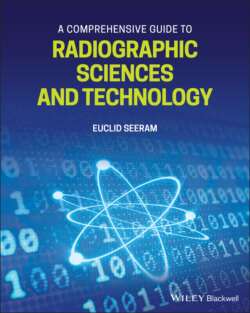Читать книгу A Comprehensive Guide to Radiographic Sciences and Technology - Euclid Seeram - Страница 20
Image quality considerations
ОглавлениеImage quality is a significant goal of radiographic imaging modalities. The attenuated radiation data from the patient are used to create images that are used for diagnostic interpretation by a human observer. There are at least five important descriptors of digital image quality and these include spatial resolution, contrast resolution, noise, detective quantum efficiency (DQE), and image artifacts. While spatial resolution addresses the sharpness of images, and is related to the size of the pixels (picture elements) in an image, contrast resolution or density resolution deals with the ability of the imaging system to demonstrate differences in tissue contra, and is linked to the bit depth, that is the range of gray levels per pixel. Noise, on the other hand, depends on the number of x‐ray photons used to create the image. While fewer photons (low exposure technique factors) will result in more noise (grainy appearance), more photons (higher exposure technique factors) will create a better image (less noisy image), but at the expense of dose. Another digital image quality descriptor is the DQE, which is a measure of the efficiency and fidelity with which the detector can convert an input exposure into a useful output image. Finally, digital images are not free of artifacts. These are features seen on the image that are not present in the patient, and can pose challenges for the human observer in detecting fact from artifact.
